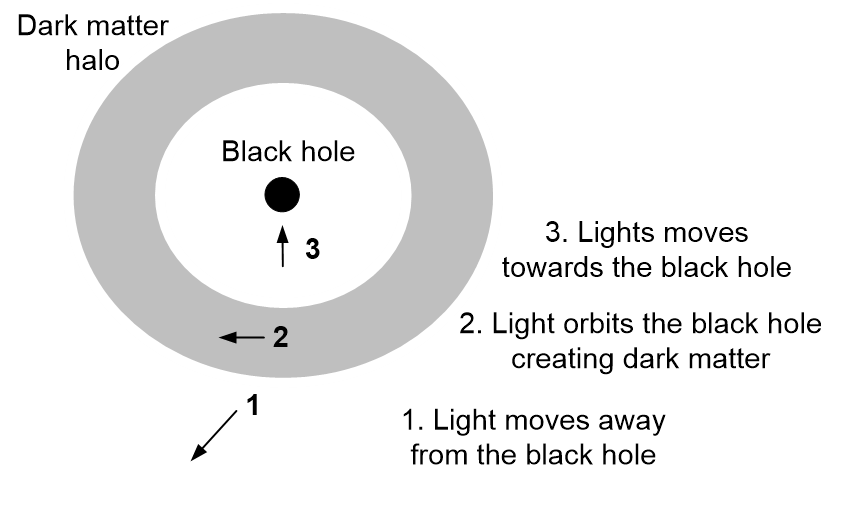In the 1950s, astronomers discovered that our galaxy rotated as if it had more matter than its stars allowed, five times more in fact. They attributed this to dark matter, dark because it can’t be seen and matter because it caused gravity. The rotation curves of other galaxies suggested they were the same, so astronomers now estimate that about 85% of the matter of the universe is dark. Based on its effects, dark matter seems to exist as a halo around the black hole at the center of most galaxies, including ours.
What then is dark matter? It isn’t the matter we see because light can’t detect it, it isn’t anti-matter because it has no gamma ray signature, and it isn’t a black hole because there is no gravitational lensing, yet it holds galaxies together so their stars don’t fly off. It made our galaxy stable, so the matter-producing factories we call stars had time to make the atoms needed for life and us. Dark matter is the glue that binds galaxies together, but its cause is unknown.
The standard model proposed that WIMPs (weakly interacting massive particles) cause dark matter but this turned out to be just another wild-goose chase. Despite talk of super-WIMPs (Feng, Rajaraman, & Takayama, 2003), the search for WIMPs, like gravitons, proton decay, and squarks, led nowhere, so currently, 85% of the matter in our universe has no particle cause.

What then is the alternative? If mass is a constant net processing result, could a halo of light do that? We expect the black hole at the center of our galaxy to trap light in a halo around it. Light near the black hole is pulled in, and light far away escapes, but at some radius it will constantly circle it (Figure 4.27).
This halo of light will build-up over time as more photons join, until it is a dense flow of wave-fronts that move on each cycle. Light circling the opposite way would be the same, as light in our space vibrates first up then down. No particles are created because it isn’t light colliding, but a constant net processing excess at every point would produce mass. A dense halo of light around a black hole would then cause mass as usual but without particles.
Yet the halo passes on photon tails as well as heads, so won’t the result cancel out? Current research suggests that dark matter has a tiny negative charge, about a millionth of an electron’s charge (ScienceAlert), so it seems that at each halo point, more heads are processed than tails. The effect is very weak, but a permanent net processing excess throughout a huge halo will add a lot of mass.
A halo of light circling a black hole could generate mass as electrons do, but spread through a light stream, not concentrated at a point. Extreme light trapped at a point then causes particle matter while dense light trapped in orbit around a black hole causes dark matter. Dark matter isn’t particle-based, so the halos of galaxies don’t collide when they do, but just remain around each galaxy when they separate. Note that small galaxies can exist with no black holes, and galaxies that have lost their stars can consist of 99.9% dark matter.
Ordinary and dark matter then both come from light, but dark matter isn’t visible because photons either pass through the halo at an angle or join the stream, so particles will never explain it.